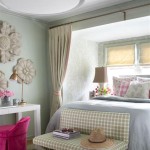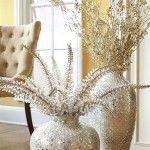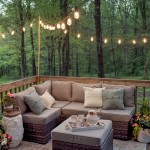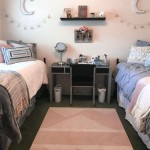```html
Colombian Home Decor: A Fusion of Tradition, Nature, and Modernity
Colombian home decor represents a rich tapestry woven from indigenous traditions, colonial influences, and a deep connection to the country's diverse natural landscapes. This unique blend results in interiors that are vibrant, welcoming, and reflective of Colombia's cultural heritage. Understanding the key elements of Colombian style can provide valuable insight for those seeking to incorporate its warmth and character into their own homes.
The geographical diversity of Colombia, encompassing rainforests, mountains, and coastal regions, profoundly influences its design aesthetic. The availability of natural materials like wood, bamboo, and textiles derived from indigenous plants has played a significant role in shaping the traditional and contemporary styles. Furthermore, the country's artistic heritage, manifested in its vibrant crafts and distinct architectural forms, enhances the uniqueness of Colombian interiors.
Historical context is crucial for understanding the evolution of Colombian home decor. Pre-Columbian artistry, characterized by intricate patterns and symbolic motifs, laid the foundation for later artistic expressions. The arrival of the Spanish colonial era brought European influences, which were gradually adapted and integrated with existing indigenous traditions, resulting in a distinctive hybrid style. This fusion continues to evolve, incorporating modern design elements while preserving the essence of Colombian identity.
Key Elements: Color Palettes and Natural Light
Color plays a pivotal role in Colombian home decor. Bold and vibrant hues are often used to create a sense of energy and warmth. Earthy tones, such as terracotta, ochre, and forest green, reflect the natural landscape and provide a grounding effect. Complementary colors, like blues and oranges or yellows and purples, are frequently used to create visual interest and dynamism.
The use of bright and cheerful colors is not merely aesthetic; it also serves a practical purpose in a tropical climate. Light-reflecting colors help to keep interiors feeling brighter and more spacious. In addition, the strategic use of color can highlight architectural features and create focal points within a room. Textiles, such as woven rugs and cushions, often feature intricate patterns and vibrant colors that contribute to the overall visual richness.
Natural light is an essential element in Colombian home design. Large windows and open floor plans are designed to maximize the flow of sunlight, creating bright and airy living spaces. Sheer curtains or blinds are often used to filter the light and provide privacy without completely blocking the sun. The incorporation of indoor plants further enhances the connection to nature and contributes to the overall sense of well-being.
The integration of natural light is also essential for showcasing the textures and colors of the materials used in Colombian decor. Sunlight enhances the warmth of wood, highlights the intricacies of woven fabrics, and brings out the vibrant hues of painted surfaces. By maximizing natural light, Colombian home decor creates spaces that are both inviting and visually stimulating.
Key Materials: Wood, Textiles, and Natural Fibers
Wood is a cornerstone of Colombian home decor, used extensively in furniture, flooring, and architectural details. Different types of wood are favored depending on their availability and durability. Mahogany, cedar, and tropical hardwoods are commonly used for creating sturdy and elegant furniture pieces. Bamboo and other sustainable woods are also gaining popularity as eco-friendly alternatives.
The craftsmanship of woodworking is a significant part of Colombian cultural heritage, with skilled artisans creating intricately carved furniture and decorative objects. Traditional techniques are often passed down through generations, preserving the artistry and craftsmanship of the past. Wooden furniture is often left with a natural finish to showcase the beauty of the wood grain and its inherent warmth.
Textiles play a crucial role in adding color, texture, and cultural significance to Colombian interiors. Woven rugs, tapestries, and cushions are often adorned with intricate patterns and vibrant colors, reflecting the artistry of indigenous cultures. Traditional weaving techniques, such as backstrap weaving and ikat dyeing, are used to create unique and striking textiles. These textiles not only enhance the aesthetic appeal of a space but also serve as a connection to the country's rich artistic heritage.
Natural fibers, such as fique, sisal, and cotton, are also widely used in Colombian home decor. These materials are often used to create rugs, baskets, and other decorative objects. Their durability and natural texture contribute to the overall organic feel of Colombian interiors. The use of natural fibers also supports local artisans and promotes sustainable practices.
Key Characteristics: Handmade Crafts and Regional Variations
Handmade crafts are an integral part of Colombian home decor, showcasing the country's artistic talent and cultural diversity. Pottery, ceramics, and hand-painted objects are commonly used to add personality and character to a space. These crafts often feature traditional motifs and designs, reflecting the unique artistic traditions of different regions of Colombia.
The use of handmade crafts not only supports local artisans but also adds a sense of authenticity and uniqueness to a home. Each piece is imbued with the skill and artistry of the craftsperson, making it a one-of-a-kind object. These crafts can range from functional items, such as bowls and plates, to decorative objects, such as sculptures and paintings.
Regional variations are a defining characteristic of Colombian home decor. Each region of Colombia possesses its own distinct artistic traditions and design preferences, reflecting its unique geographical and cultural context. The coastal regions, for example, often feature brighter colors and lighter materials, reflecting the tropical climate. The Andean regions, on the other hand, tend to favor warmer tones and more rustic materials, reflecting the cooler mountain climate.
The region of Antioquia is known for its use of traditional tiles and colorful facades. The Caribbean coast features vibrant outdoor spaces and furniture made from natural materials. The Amazon region showcases crafts and designs inspired by the rainforest. These regional variations contribute to the richness and diversity of Colombian home decor, making it a constantly evolving and fascinating field.
In conclusion, Colombian home decor is a dynamic blend of tradition, nature, and modernity. The integration of vibrant colors, natural materials, and handmade crafts creates spaces that are both aesthetically pleasing and culturally significant. By understanding the key elements and regional variations of Colombian style, individuals can appreciate its unique charm and incorporate its welcoming spirit into their own homes.
```
Photographer Anita Calero Mountain Home In Cali Colombia

In Bogotá A Designer S Eclectic Home And Bonsai Filled Garden The New York Times

Designer Furniture Inspired By Colombian Cultural Heritage Archi Living Com Web Architects And Designers

Spanish Colonial Colombian Home Hammock Wooden Wall

Traditional Colombian Colonial Style For A Country House American Decor Home Interior

The Local Flea

Pin By Pinner On Travels Beautiful Accommodations Spanish Style Homes Home Deco

This Fashion Designer Brings A Sophisticated Spirit Into Her Cartagena Home Take Look Inside

Designer Furniture Inspired By Colombian Cultural Heritage Archi Living Com Web Architects And Designers

Lifestyle Designs Home Decor Zuahaza Luxe
Related Posts







